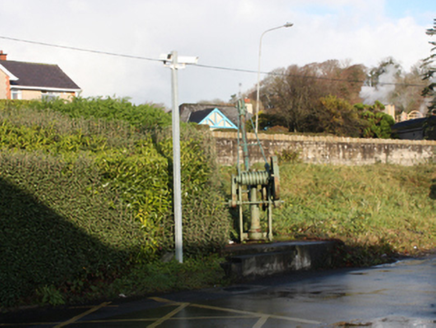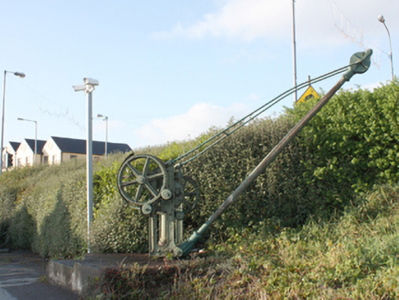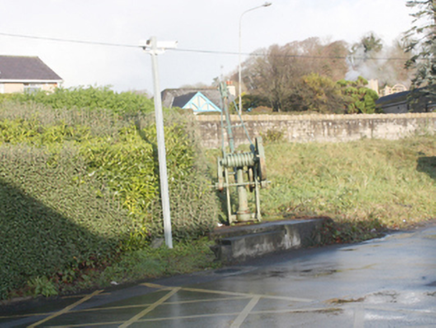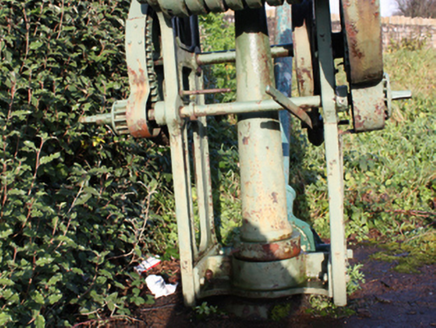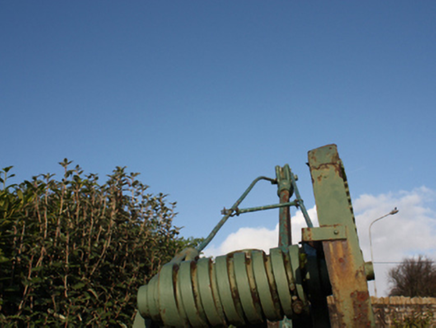Survey Data
Reg No
40502318
Rating
Regional
Categories of Special Interest
Historical, Technical
Original Use
Building misc
In Use As
Building misc
Date
1880 - 1910
Coordinates
217442, 411858
Date Recorded
01/12/2008
Date Updated
--/--/--
Description
Freestanding crane with cast-iron or steel winch, cast-iron or steel cog wheels and cast- and wrought-iron lifting arm\jib, erected c. 1883 or c. 1908, set in a concrete base. Now disused. Located to the north end of car park to the north-east of the former Letterkenny Railway Station (see 40502131) and to the north-east of the centre of Letterkenny.
Appraisal
This crane is of industrial archaeological significance as a reminder of the great age of the railways in Ireland from the second half of the nineteenth century into the first decades of the twentieth century. Retaining its original mechanisms, this crane, which was intended to be operated by hand and was designed to swivel, is of technical and engineering importance. This crane\winch was formerly associated with Letterkenny Railway Station (see 40502318), which was built in 1908 to serve the Strabane to Letterkenny Railway line that was constructed County Donegal Railways Joint Committee. This crane may have been associated with an earlier station to site that was built adjacent to the present former railway station in 1883 by the Londonderry and Lough Swilly Railway Company as the terminus of the Burt Junction to Letterkenny section of the Londonderry to Letterkenny railway line. This appears to have been operated by a separate company known as the Letterkenny Railway Company. An additional line was built from this earlier station, later demolished, to Burtonport in 1903. There were formerly railway sidings connecting all these lines to this former station in Letterkenny. The Strabane to Letterkenny railway was closed in January 1960, the earlier railway lines ceased to operate in 1953. This simple crane\winch acts as a reminder of this period in Letterkenny’s transport history, and it remains an integral component of the built heritage of the town, and of the wider transport, social and economic history of County Donegal.
